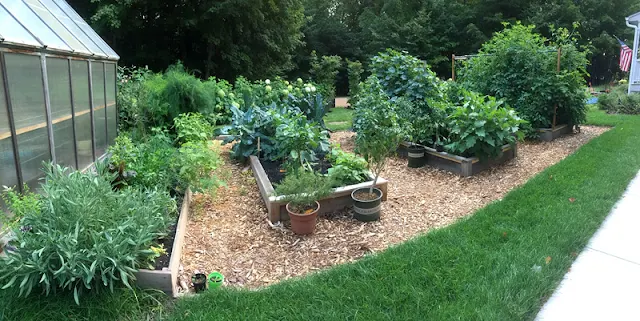To perceive the early arrival of autumn is nothing special. To read the language of our environment and to understand its meaning, in the Western mind, is like understanding Latin. Most will see an archaic text, pass over it, and only occasionally fathoming the root of some current verbiage. Millions of years of evolving, hundreds of thousands of years within this epoch of variable, yet recognizable, climate and species and still we have lost the ability to be at home in the world. I write 'at home' to indicate that set of cues that are so familiar as to become understood inconspicuously.
Our trip to Yellowstone National Park, the primary stimulus for these thoughts, offered some very unfamiliar cues. If you haven't been, go. The park is massive, often taking several hours to get from one site to your lodging. There are bison, and more worrying -grizzly bears. You are walking on a volcano, something difficult to dislodge from your steaming, sulfur-scented consciousness.
__________________________
Every season I have five, ten, maybe twenty projects to accomplish during the warm season. I typically finish three, especially when the warm season lasts only three months. This year's major project was to complete the renovation of the front lawn-vegetable garden. Above, eggplants, peppers, and cucumbers.
The far left raised bed was refurbished as it had been made from scrap decking, then a new ten foot bed was built and installed, and the remaining two beds moved from last year's location. The framing and mulching was accomplished in early June and then I moved on to other projects.
After our return from Yellowstone I set about laying the sod. We chose sod to cover the area previously covered in black plastic laid to smother creeping charlie. Sod is outside of my experience, and I messed up. When laying sod it is best to have prepped the ground ahead of time, it's best to get it unrolled in a day or two. I had to stretch it over four days and nearly composted the sod on its pallet because I hadn't the time to prepare the soil, pull the volunteer tomatoes (what was I thinking?), or deal with the unknown habits of sedge that had grown where the beds had stood the year before.
It was only continual rain storms and the early autumn temperatures that spared me the near-total loss of live grass. I credit this for its return from tawny mush to lively green, albeit a few patches of dead remain. Although I've been spared the shame of spending a small fortune on sod and then killing it, the lack of soil preparation will undoubtedly reduce the benefits of sod over seed in the long run.
My July planting of green beans were trimmed quite well by the four-legged pruning crew. But, they came back and I now have a steady supply to snack on in between mosquito raids. Unlike a national park (the "wilderness"), our place is home to us and many other creatures. Living with them feels much more natural than any wilderness experience I've had.
A new garden bed grows out an area of removed hydrangea. Scraps of plants, all flowering blue-purple, have been planted throughout the summer. In the background, the browning of a wet autumn.







It all looks so verdant ... and peaceful! Good job - even the near miss on the grass.
ReplyDeleteWe put sod in our first dog "run". He was an old dog and didn't actually "run" any more, so we thought it would make a nice soft place to lie. Epic fail! He was fascinated by the "mesh" that holds the sod together and kept chewing and pulling it up. The sod ended up as shreds ... on top of the mud. (We did till it up and rake it out ... some.) Yours looks much better and will probably do ok. Grass is tough and will love the "good dirt" under it - probably, even unprepared.
Now, lots of time to plan next year's projects.
I'm sure it was a nice place to lay down but it is hard to think like a dog. I didn't realize there is mesh -I get it because the sod can fall apart when you lift it and sling it. But I don't think mine had that mesh since I ripped it too often.
Delete